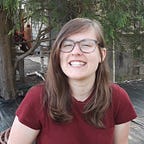Senior Studio: Fall 2021
Designing an outdoor experience in the Pittsburgh area inspired by the Carnegie Museum of Art’s “Extraordinary Ordinary Things” to rethink the future direction of museums and their exhibits
Reflecting on the First Two Weeks
At the start of this project, I think the main struggle I had was in being able to embrace the unknown and not try to narrow in my thinking or put too many constraints on myself, especially this early. The breadth of the objects displayed in the museum, the level of reliance I have on those objects, and just how I wanted to incorporate something new into the work was a lot to think about, making it easy to get overwhelmed. I think the biggest takeaway from those initial anxieties was to think in the now and what we do know, understanding that not all of these questions can be answered all at once, nor should they be.
Before visiting the museum, I had selected the porcelain punch bowl by Roberto Lugo as my object and explored thinking about how we recognize a place.
Experiencing the museum, I found it interesting how the space was set up and how some of the artifacts were grouped together to promote discussion. One of the most interesting things was how some objects that I had seen online differed in scale in real life from what I imagined they would be, the white background on the online images eliminating the context for scale. I found it interesting how, in an effort to maximize space and focus the visitor’s attention in the exhibit, the context of these objects is eliminated, making me wonder what kind of places these artifacts would actually be found in. Some of these objects play a part in how the place is defined, while others are more versatile and can be in a variety of locations and time periods, but without the context of the artifacts present, these ideas were left up to the imagination.
Reflecting on the experience, I was most interested in where we could take the experience next to build off of what is already existing in the museum and what the current message of the space is. Who decides what goes into the exhibit? What is the message of these objects being included in the space, what are they trying to say? How can we utilize what is already in these public spaces to make experiences that naturally fit to the space?
Researching more into Roberto Lugo and his work, I loved his approach of taking a traditionally very traditional museum material like porcelain and combining it with styles and icons of culture that are rarely represented in a museum space. By being in the exhibit, it showcases how these objects are rarely recognized within the “high art” space, as well as how the access to luxury resources is rarely accessible to his community to make pieces like that. I think that one of the key goals I have for my work in this project is to amplify the voices of others in the community who usually aren’t represented in a museum setting, leveraging our location in Pittsburgh by speaking with those who have lived here long-term to hear the history and real stories of our place.
At the furnace, it was an interesting experience for me to revisit this location as a senior and understand the context of this location within Pittsburgh a bit better. Just like how some of the museum artifacts felt like they were missing some of their context to make their stories complete, I felt that my tour as a freshman was helpful and insightful but that I lacked the experience of the city and the knowledge of the history to make the visit as impactful as it was visiting again.
The colors and the lettering of the graffiti on the walls caught my attention much more in this visit, and I felt that it tied in well with my working thoughts of art in its context combined with work that is not given the respect or the same stage as “high art” found in museums. With each style being so unique and different, I would love to research some of these artists to hear how they learned this art and what other work they participate in.
The Carnegie Library was inspiring for its way to transform my typical idea of what a library is by truly adapting to the needs of its community. I loved areas like the ceramics studio and the printing room for lowering the barrier to entry into these art forms, as these types of art typically require a large upfront cost for materials and machines. By allowing individuals to access art and art-making tools, they can understand the value of art and expression on their own in a way that they might not have had the opportunity to do otherwise. Pieces like the ceramic ornaments or the wall of children’s art gave me a new way to interpret community curation, not just asking what the community would like to see but asking them to play a role in the making of the work as well.
